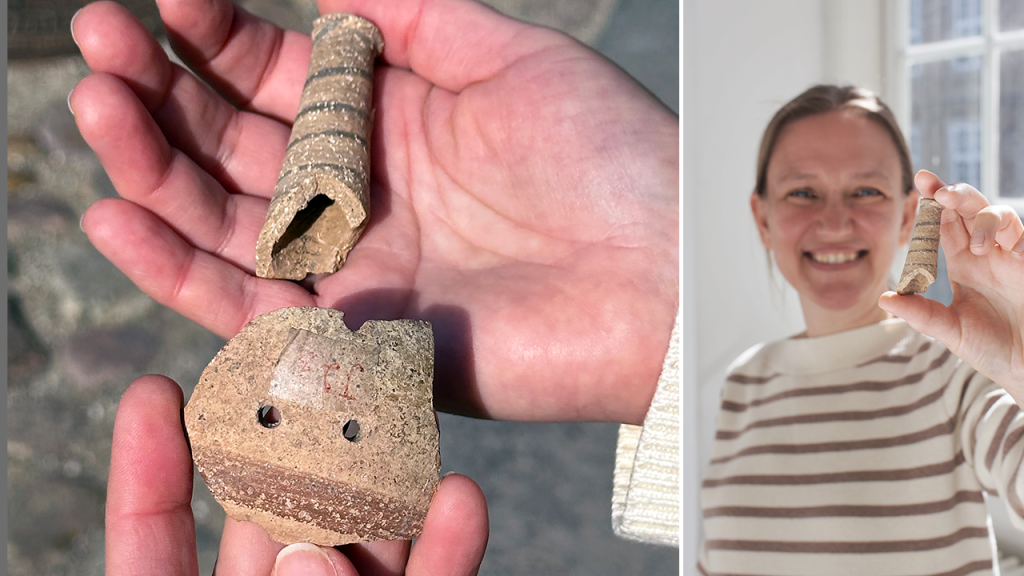Recent archaeological findings have unveiled fascinating insights into the daily lives of ancient civilizations. A collaboration involving the National Museum of Denmark, alongside historians from Archéorient CNRS in France and the University of Milan, has led to the discovery of 4,500-year-old baby rattles in Syria. The research, recently published in the journal *Childhood in the Past*, sheds light not only on the craftsmanship of these ancient toys but also on the social practices of parenting during the Bronze Age.
| Article Subheadings |
|---|
| 1) Discovery of Ancient Rattles |
| 2) The Significance of the Find |
| 3) Insights on Parenting in the Bronze Age |
| 4) Archaeological Methods and Analysis |
| 5) Broader Implications for Ancient Economies |
Discovery of Ancient Rattles
The National Museum of Denmark recently announced a groundbreaking discovery in Syria: a collection of 4,500-year-old baby rattles, which is believed to be the largest such find in the Near East. Unearthed in the ancient city of Hama, these rattles were mass-produced by skilled potters and reflect a high level of craftsmanship characteristic of the time. A total of 19 rattles were found, highlighting the existence of a commercial craft industry focused on producing toys for children, which suggests that the needs of young ones were important even in ancient societies.
The Significance of the Find
This discovery is significant not just from an archaeological standpoint but also from a historical perspective. The rattles serve as a tangible connection to everyday life 4,500 years ago, revealing aspects of child-rearing practices and societal values of that time. According to researchers, the rattles included small pebbles or pieces of clay, designed to produce soft sounds, indicating their intended use as toys rather than musical instruments. Such details enable historians to draw conclusions about how children were entertained and what materials were utilized for daily objects.
Insights on Parenting in the Bronze Age
The existence of these rattles provides deepened insights into parental care in ancient civilizations. Researcher Mette Marie Hald of the National Museum of Denmark indicates that these toys were likely crafted not only for entertainment but also for aiding children’s sensory and motor development. “It shows us that parents in the past loved their children and invested in their well-being, just as we do today,” Hald noted. This parallel emphasizes the universality of parental devotion, transcending time and place, reinforcing that all societies strive to nurture their young.
Archaeological Methods and Analysis
The methods used in excavating these rattles involved meticulous stratigraphic excavation techniques, allowing archaeologists to understand not just the artifacts but their context within a residential area of ancient Hama. The analysis of the rattle materials indicated that they were created from a specific clay mixture used to make pottery, suggesting that the artisans aimed for homogeneity in the products they offered. The small size of these rattles further indicates that they were specifically designed for children, supported by the observation that the handles were perfectly fit for a child’s hand.
Broader Implications for Ancient Economies
From an economic perspective, the discovery illuminates the market dynamics of the Bronze Age in Hama. As noted by Hald, the existence of a commercial toy industry suggests that there was not only a demand for children’s goods but also a structured marketplace where such items were sold. This indicates a complexity in societal structures where children’s needs were met alongside adult requirements, and contributes to our understanding of family dynamics. Such findings might inspire a reevaluation of economic activities in ancient civilizations, focusing on domestic life and the interplay between production and consumer needs.
| No. | Key Points |
|---|---|
| 1 | Ancient baby rattles, dating back 4,500 years, were discovered in Hama, Syria. |
| 2 | The rattles were mass-produced by skilled potters, highlighting the craft industry of the time. |
| 3 | The design of the rattles suggests they were specifically made for children, signifying care for young ones. |
| 4 | The discovery indicates a market for commercial toys, revealing insights into ancient economic structures. |
| 5 | This find provides a broader understanding of parenting, domestic life, and societal values in the Bronze Age. |
Summary
The recent discovery of 4,500-year-old baby rattles in Syria not only enhances our understanding of ancient craftsmanship but also paints a vivid picture of parental roles in the Bronze Age. These findings remind us of the universal nature of childhood and parenting, revealing that the care for young ones has transcended millennia. Furthermore, it showcases the existence of a marketplace dedicated to children’s goods, offering valuable lessons in the socio-economic dynamics of ancient civilizations.
Frequently Asked Questions
Question: What was the primary purpose of the rattles discovered in Syria?
The rattles were primarily designed for children, serving as toys to entertain and aid in their sensory and motor development.
Question: How were the rattles constructed?
The rattles were made from a specific clay mixture used by professional potters, indicating they were mass-produced rather than handmade.
Question: What does the discovery of rattles reveal about ancient economies?
The discovery suggests the existence of an organized market for toys in the Bronze Age, indicating that there was demand for children’s goods alongside adult needs.
